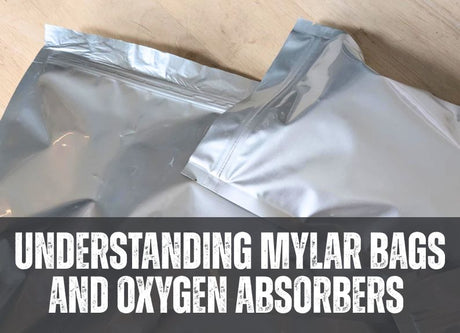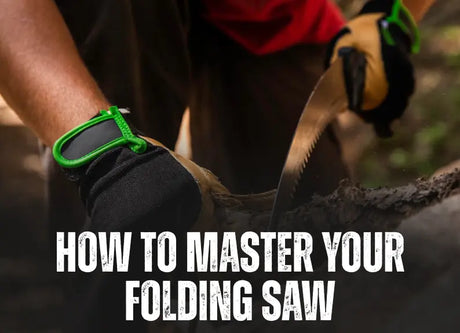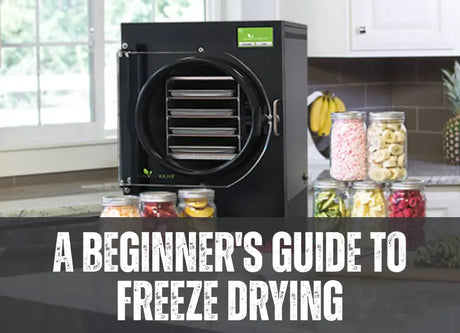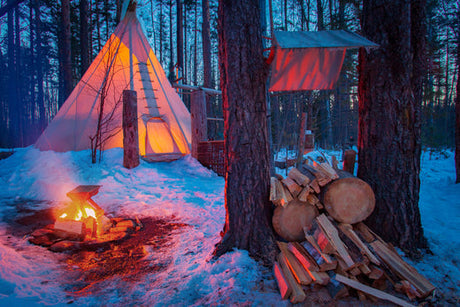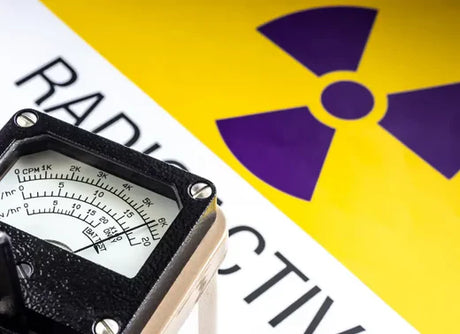In a grid-down situation, you will lose the ability to utilize digital technology. If you don’t know how to navigate without your cell phone or GPS, now is the time to start learning. In this blog, we’re going to give you tips and considerations for planning your bug out route.
What to put in your analog navigation kit:

There are some fundamental items that you will need to learn how to use in order to orient yourself without digital navigation tools. This kit has everything you need to read maps and find your way after the grid-down.
-
Orienteering Compass
An orienteering compass will be indispensable for you in manual navigation. It provides you with the ability to triangulate your position, direct yourself to your desired destination, give accurate directions using bearings, as well as calculate distance using map scale. Learning how to comfortably use an orienteering compass is an essential survival skill.
-
Maps
Have maps or map books of your region such as province or state maps, back-road maps, and even railroad maps –– the more information you have, the better. These maps contain invaluable information such as topographical information, up-to-date declination for your region, and will allow you to calculate distance or create directions using your orienteering compass. Collect a variety of maps for your area including subway maps, back roads maps, train line maps, and more.
-
Writing tools
This can include a waterproof pen, pencil, writing pad and more. You will need to use these to mark your maps for declination and triangulate your location. In all survival situations, a writing utensil is one of the most overlooked necessities.
-
Binoculars
When you’re bugging out, size and weight can be a concern. Choosing binoculars might seem easy, but once you dive in you will realize that there is a lot to choose from. Binoculars come in a wide range of sizes and focal lengths. For packing light, a pair of binoculars with a roof style prism and a magnification of 8 or 10 with an objective lens diameter of 28 or less (8x25, 10x25, 8x28 and 10x28) will all make great additions to your pack. You can also choose a pair that is more durable by adding waterproofing or rubber coatings. Do your research so that you are able to choose the right pair for you.
Essential things to know when grid-down occurs.
Before it’s a survival situation, you need to become intimately aware of your surrounding area. This should include up to a 500-mile radius, both urban and rural. Using analog maps, pre-plan your bug out spot and chart multiple available routes to get there. Understanding how to use an orienteering compass will be a necessity in your survival.
Key terms for using an orienteering compass:

-
Magnetic North
Magnetic North corresponds to the focal point of Earth's magnetic field lines. This is where the magnetized arrow of your compass will point without the declaration information.
-
True North
As opposed to Magnetic North, True North is the direction you should use to orient yourself on a map. To find True North, you will need the declination information for your geographical location. Many maps will include declination information, but it is important to have up-to-date maps, as this information shifts over time.
-
Declination
This value is the difference between True North and Magnetic North for your specific location. It is imperative that you know the declination number for your area in order to utilize analog navigation. This information will shift year to year and is dependent on your location in the world, so it is an important and specific number to know. You can find your declaration and see models of historical and predicted magnetic declination on the National Centres for Environmental Information’s website. Declination will be measured by degrees east or west of Magnetic North.
-
Bearing
The bearing of a point is the angle measured from the North line. This information can help guide you to a specific place or landmark by allowing you to set your compass to the direction of travel.
To take a bearing using your map, find where you are on the map. Using the edge of your orienteering compass, create a straight line from your current location to the location you are traveling to (such as your campsite, cache, or a landmark), ensuring the direction-of-travel arrow is facing the location you want to go. Next, turn your bezel so that the orientation lines (beside the orientation arrow) are lined up with the map. Ensure that the N and S arrows on your bezel are lined up with N and S on your map. This will give you a bearing to follow. Once you have set the bearing, hold the compass in front of you with the direction-of-travel arrow pointing away from you and rotate your whole body until the painted orienting needle and the magnetic needle align (also referred to as red in the shed).
To take a bearing in the field, begin by holding the compass level. Point the compass toward a landmark that is also visible on the map, ensuring you point the direction-of-travel arrow towards the landmark. Turn the bezel on your compass to determine the bearing, and then line up your compass with north and south on your map, ensuring your direction-of-travel arrow is facing in the direction of the landmark. Draw a line on the map with a pencil using the edge of your compass. You can find your location through triangulation by using this method.
-
Triangulation
To find your current location on a map, take three or more distinct bearings using landmarks. The place where those lines intersect is where you are standing.
3 things you should know about where you live.

The knowledge you gain pre-SHTF could make the difference between life and certain death. How much do you really know about the place that you live?
-
Where is the nearest body of water?
Water is a necessity that you will not survive without. Finding fresh water can be your ticket to survival as it can provide drinking water, fishing, and allow you easy transportation.
-
Which land in your area is crown land and which is private property?
Ensuring that you’re not encroaching on someone's private land could save your life. In a post grid-down world, home defense could become a deadly practice. Know where you can stake a claim and where you should avoid.
-
What is your hardiness zone?
This is essential knowledge for post collapse gardening –– a skill that could help you thrive in this new world. Seeds are light and small and incredibly easy to pack, but if you don’t know what will grow in your environment, you could be wasting a lot of time. Learn about the produce that is best suited to your area –– if you live in the Yukon, don’t try to grow a lemon tree.
Bushcraft skills can make all the difference when you need to bug out.
In the event of a grid-down, how will you access the technology you require? Cell phones, GPS devices, and more will all go down in short order, leaving you stranded if you are unprepared. Just like with trapping, lighting fires, and other survival skills, practice is necessary. Learn how to navigate your environment and you can thrive when the lights go out.




